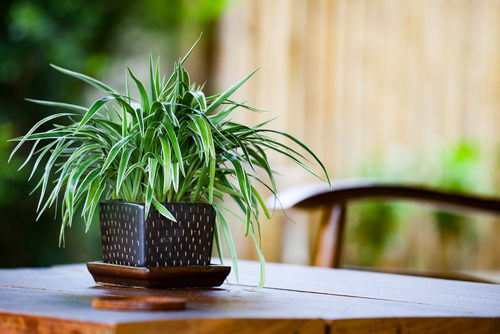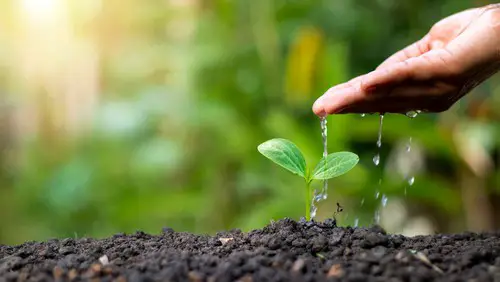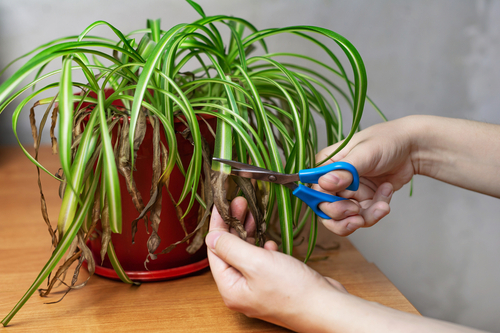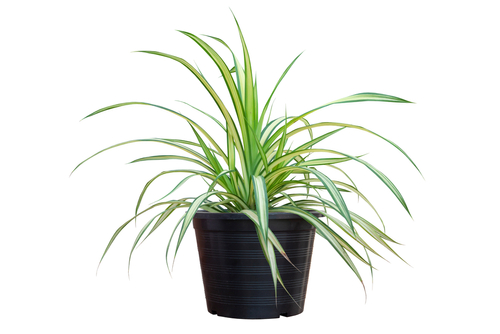Spider plants are a popular choice for indoor gardening enthusiasts due to their low maintenance and attractive appearance. However, even the most seasoned gardeners can struggle with keeping their spider plants alive after repotting. If you’re noticing your spider plant dying after repotting, you’re not alone.
Understanding spider plants is key to keeping them healthy. Spider plants are native to tropical and southern Africa and prefer bright, indirect sunlight and well-draining soil. They are also sensitive to overwatering, which can lead to root rot and other issues.
Repotting a spider plant can be stressful for the plant, which can cause it to go into shock and struggle to adapt to its new environment.Why repotting can cause problems for spider plants is a common question among indoor gardeners.
This article will explore the various factors that can contribute to a spider plant dying after repotting, including watering issues, soil and drainage concerns, nutrient and fertilizer factors, light and temperature conditions, and pests and diseases.
Additionally, we will provide tips on how to revive your struggling spider plant and answer some frequently asked questions.
Key Takeaways
- Repotting can cause stress to spider plants and lead to a decline in their health.
- Overwatering, poor soil drainage, and inadequate light can contribute to a spider plant’s decline after repotting.
- With proper care and attention, it is possible to revive a dying spider plant and bring it back to its former glory.
Also read:
Understanding Spider Plants

Spider plants, also known as Chlorophytum comosum, are popular houseplants that are native to South Africa. They are easy to grow and maintain, making them a great choice for beginners or those with limited time to care for their plants.
Spider plants are known for their long, slender leaves that grow in a rosette pattern. The leaves can be green or variegated, with white or yellow stripes. They also produce small white or yellow flowers that eventually turn into small plantlets, which can be propagated to create new plants.
These houseplants can grow up to 2 feet in height and prefer bright, indirect light. They can tolerate low-light conditions, but their growth may be stunted. Spider plants also prefer well-draining soil and can be prone to root rot if overwatered.
Spider plants are generally low-maintenance and can thrive in a variety of environments. However, they can be susceptible to certain issues, such as pests and diseases. It is important to monitor spider plants for any signs of distress, such as wilting or yellowing leaves, and take appropriate action to remedy the situation.
Why Spider Plant Dying After Repotting Can Cause Problems
When a spider plant is not doing well, repotting is often recommended as a solution. However, repotting can sometimes cause problems that lead to the plant’s death. In this section, we will discuss the reasons why repotting can cause problems for spider plants.
Repotting and Root Damage
During repotting, the spider plant’s roots can become damaged, which can lead to a variety of problems. For example, if the roots are broken or torn during the process, the plant may not be able to absorb enough water and nutrients from the soil. This can cause the plant to wilt, turn yellow, or die.
Another problem that can occur during repotting is overpotting. When a plant is placed in a container that is too large for its root system, the soil can become waterlogged, which can lead to root rot. This is especially true if the plant is overwatered after repotting.
Transplant Shock and Its Effects
Transplant shock is another problem that can occur during repotting. This is when the plant’s root system is disturbed, and it goes into a state of shock. During this time, the plant may not be able to absorb enough water and nutrients from the soil, which can cause it to wilt, turn yellow, or die.
To avoid transplant shock, it is important to be gentle when repotting the spider plant. It is also important to ensure that the soil is moist before and after repotting. This will help the plant to recover more quickly and reduce the risk of transplant shock.
In addition to transplant shock and root damage, the size of the pot can also be a factor in the plant’s health. If the pot is too small, the plant may become root-bound, which can lead to stunted growth and poor health. On the other hand, if the pot is too large, the soil can become waterlogged, which can lead to root rot.
Watering Issues

When it comes to repotting a spider plant, watering issues are one of the most common reasons why the plant may start to die. Proper watering is essential for the plant’s health, and it’s important to strike the right balance between overwatering and underwatering.
Overwatering and Root Rot
Overwatering is a common mistake that many people make when repotting their spider plants. When the plant is overwatered, the soil becomes waterlogged, which can lead to root rot. Root rot is a serious condition that can cause the plant to die if left untreated.
To avoid overwatering, it’s important to establish a watering schedule and stick to it. Spider plants prefer to be watered when the top inch of soil is dry to the touch. It’s also important to ensure that the pot has proper drainage to allow excess water to escape.
Underwatering and Wilting
On the other hand, underwatering can also cause a spider plant to die after repotting. When the plant is underwatered, it can wilt and eventually die.
To avoid underwatering, it’s important to monitor the plant’s soil moisture levels regularly. Spider plants prefer to be watered consistently, but not excessively. It’s also important to ensure that the plant is getting enough water and nutrients.
Rainwater and distilled water are both good options for watering spider plants. Rainwater is free from chemicals and pollutants, making it an ideal choice for plants. Distilled water is also a good option because it doesn’t contain any minerals or chemicals that can harm the plant.
Soil and Drainage Concerns
Understanding Soil Quality
Soil quality is an important factor to consider when repotting spider plants. Poor soil quality can lead to a lack of nutrients, which can cause the plant to become weak and susceptible to disease. It is important to use a high-quality potting soil that is specifically formulated for houseplants.
When selecting a potting soil, look for a mix that contains a blend of peat moss, perlite, and vermiculite. These ingredients will help to improve soil drainage and aeration, which is essential for healthy plant growth. Avoid using soil mixes that contain heavy clay or sand, as these can lead to poor drainage and waterlogging.
Importance of Drainage

Proper drainage is also critical for the health of spider plants. When repotting, make sure that the new pot has drainage holes in the bottom. These holes will allow excess water to drain out of the soil, preventing waterlogging and root rot.
It is also important to choose a pot that is the right size for the plant. A pot that is too large can lead to poor drainage, as the excess soil will retain too much moisture. On the other hand, a pot that is too small can lead to overcrowding, which can cause the plant to become rootbound and stunt its growth.
Nutrient and Fertilizer Factors
When a spider plant is repotted, it is important to consider the nutrient and fertilizer factors that can affect its growth and survival. This section will cover how to identify nutrient deficiency and the dangers of overfertilization.
Identifying Nutrient Deficiency
Spider plants require a balanced mix of nutrients to thrive. A deficiency in any of these nutrients can cause the plant to wither and die. Here are some common signs of nutrient deficiency in spider plants:
- Yellowing leaves: This is a sign of nitrogen deficiency. Nitrogen is an essential nutrient for plant growth and helps to keep leaves green.
- Stunted growth: If your spider plant is not growing as it should, it may be lacking phosphorus. Phosphorus is necessary for root development and flower production.
- Brown leaf tips: This is a sign of potassium deficiency. Potassium helps to regulate water balance in the plant and is essential for healthy growth.
- Pale leaves: If your spider plant is looking pale, it may be lacking iron. Iron is necessary for chlorophyll production and is essential for photosynthesis.
If you notice any of these signs, it may be time to fertilize your spider plant.
Dangers of Overfertilization
While spider plants do benefit from fertilization, it is important not to overdo it. Overfertilization can cause more harm than good and can even kill your spider plant. Here are some dangers of overfertilization:
- Root burn: Excess fertilizer can cause the roots to burn, which can lead to root damage and even death.
- Salt buildup: Fertilizer contains salts that can build up in the soil over time. This can cause the roots to dry out and can lead to nutrient deficiency.
- Leaf burn: Overfertilization can cause the leaves to become scorched and discolored. This can lead to leaf drop and can even kill the plant.
To avoid overfertilization, it is important to follow the instructions on the fertilizer package and to fertilize your spider plant only when it needs it. Organic fertilizers are a good option as they release nutrients slowly and are less likely to cause overfertilization.
Light and Temperature Conditions

Ideal Lighting for Spider Plants
Spider plants thrive in bright, indirect sunlight. Direct sunlight can cause heat damage to the leaves, while too little light can slow down photosynthesis and stunt growth.
Ideally, spider plants should be placed near a window that receives bright, indirect sunlight for most of the day. If a window is not available, artificial lighting can also be used to provide adequate lighting conditions.
Temperature Tolerance
Spider plants can tolerate a wide range of temperatures, but they prefer temperatures between 60-75°F (15-24°C). Temperatures that are too hot or too cold can cause stress to the plant, leading to wilting or leaf drop.
It is important to keep spider plants away from drafts, air conditioning units, and heating vents, as these can cause sudden changes in temperature that can harm the plant.
Pests and Diseases
Spider plants are prone to certain pests and diseases that can cause them to die after repotting. In this section, we will discuss some of the most common pests and diseases that can affect spider plants and how to identify and prevent them.
Common Spider Plant Pests
Spider mites, aphids, whiteflies, and scales are some of the most common pests that can attack spider plants. These pests can cause damage to the leaves, stems, and roots of the plant, leading to stunted growth and eventual death.
Spider mites are tiny insects that can be difficult to see with the naked eye. They can cause yellowing and browning of the leaves, as well as the formation of spider webs on the plant.
Aphids are small, soft-bodied insects that can be green, black, or brown in color. They can cause curling and distortion of the leaves, as well as the formation of sticky honeydew on the plant.
Whiteflies are small, white insects that can fly and can cause yellowing and wilting of the leaves. Scales are small, oval-shaped insects that can be brown, black, or red in color. They can cause yellowing of the leaves and the formation of a sticky substance on the plant.
To prevent these pests from attacking your spider plant, it is important to keep the plant healthy and well-maintained. Regularly inspect the plant for signs of infestation and remove any affected leaves or stems. You can also use insecticidal soap or neem oil to control the pests.
Disease Identification and Prevention

Spider plants can also be affected by various diseases, such as root rot and fungal infections. Root rot is a common problem that occurs when the plant is overwatered or when it is planted in soil that does not drain well. This can cause the roots to rot, leading to a lack of nutrients and water for the plant.
Fungal infections can also affect spider plants, especially if the plant is kept in a humid environment. This can cause yellowing and wilting of the leaves, as well as the formation of mold or mildew on the plant.
To prevent these diseases, it is important to ensure that the plant is not overwatered and that it is planted in well-draining soil. You can also improve air circulation around the plant by placing it in a location with good ventilation. If the plant is affected by a fungal infection, you can use a fungicide to control the spread of the disease.
Reviving Your Spider Plant
If your spider plant is struggling after being repotted, don’t worry. It’s possible to revive a dying spider plant and bring it back to life. Here are some steps you can take to help your plant overcome transplant shock and start thriving again.
Steps to Revive a Wilting Spider Plant
- Check the soil: Make sure the soil is moist but not waterlogged. Overwatering can cause root rot, which can lead to dead leaves and a dying spider plant. If the soil is too wet, let it dry out before watering again.
- Adjust the lighting: Spider plants prefer bright, indirect light. If your plant is not getting enough light, move it to a brighter spot. If it’s getting too much direct sunlight, move it to a shadier spot.
- Prune dead leaves: Remove any dead or yellow leaves from the plant. This will help it focus its energy on new growth.
- Fertilize: Spider plants benefit from occasional fertilization. Use a balanced, water-soluble fertilizer and follow the instructions on the package.
- Repot: If the plant is still struggling, consider repotting it again. Make sure to use a well-draining potting mix and a pot with drainage holes to prevent overwatering.
Pruning and Care Tips
Pruning is an important part of caring for a spider plant. Regularly removing dead leaves and runners will help the plant stay healthy and promote new growth. Here are some tips for pruning and caring for your spider plant:
- Use sharp, clean scissors or pruning shears to avoid damaging the plant.
- Cut off any dead or yellow leaves at the base of the stem.
- Remove any runners that are growing out of the pot to prevent the plant from becoming too crowded.
- Water the plant when the top inch of soil feels dry to the touch.
- Spider plants prefer slightly humid conditions, so consider using a humidifier or placing a tray of water near the plant.
By following these steps and taking good care of your spider plant, you can revive a dying spider plant and enjoy its beautiful foliage for years to come.
Frequently Asked Questions

How can I revive a spider plant after repotting?
Reviving a spider plant after repotting can be done by giving it the right amount of water, sunlight, and fertilizer. It is essential to ensure that the soil is well-draining and that the plant is not overwatered.
Spider plants prefer bright, indirect light, so it is best to place them near a window that receives indirect sunlight. Fertilize the plant once every two weeks during the growing season to promote healthy growth.
Why is my spider plant droopy after repotting?
A droopy spider plant after repotting is a sign of transplant shock. Transplant shock occurs when the roots of the plant are disturbed during the repotting process. This can cause the plant to wilt and appear droopy.
To help your spider plant recover, make sure it is receiving the right amount of water and sunlight. Avoid overwatering and place the plant in a bright, indirect light location.
What causes spider plant leaves to die at the base after repotting?
Spider plant leaves dying at the base after repotting can be caused by overwatering or underwatering. Overwatering can cause the roots to rot, leading to leaf death.
Underwatering can cause the leaves to dry out and die. It is essential to maintain a balance between watering and allowing the soil to dry out between waterings.
Can spider plants recover from repotting shock?
Yes, spider plants can recover from repotting shock with proper care. It is important to ensure that the plant is receiving the right amount of water, sunlight, and nutrients.
Avoid overwatering and place the plant in a bright, indirect light location. Fertilize the plant once every two weeks during the growing season to promote healthy growth.
Why does my spider plant look dead after repotting?
A spider plant may look dead after repotting due to transplant shock. Transplant shock occurs when the roots of the plant are disturbed during the repotting process. This can cause the plant to wilt and appear dead.
To help your spider plant recover, make sure it is receiving the right amount of water and sunlight. Avoid overwatering and place the plant in a bright, indirect light location.
How can I save a dying spider plant?
To save a dying spider plant, it is essential to identify the cause of the problem. Common causes of a dying spider plant include overwatering, underwatering, and lack of sunlight.
Make sure the plant is receiving the right amount of water and sunlight. Avoid overwatering and place the plant in a bright, indirect light location.
Fertilize the plant once every two weeks during the growing season to promote healthy growth. If the plant is severely damaged, it may be necessary to prune it back to encourage new growth.

Hey, I’m Lisa and I’ve been an avid gardener for over 30 years. I love writing, talking and living in the garden! Feel free to connect with me on my socials below


